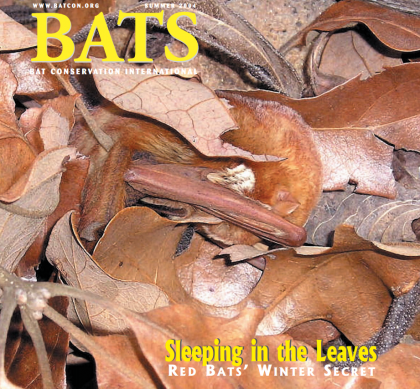
Red bats have been very conspicuous over the last few weeks of warm winter weather. They appear toward the end of the day and there’s usually enough light to see their fox-colored fur, especially when they are caught in light from the setting sun.
I’ve read that most of the bats I am seeing are males which tend to be more northerly than females in winter. In summer, red bats range across all of eastern North America, but during fall they migrate toward the east coast and concentrate in the Southeastern U.S. Nonetheless, there are hardy red bat souls that stick out the winter as far north as Missouri and Indiana.
Remarkably, these red bats don’t exactly hibernate. They go into and out of sleepy periods of torpor as winter temperatures fluctuate. They wake up to feed on warm winter days and then settle down again during colder periods.
Where they roost also depends on temperature. In warmer winter weather, they roost in trees, just as they do in summer. Their red pelage helps them mimic a curled up oak leaf that hasn’t yet fallen from a tree. In colder weather, the bats go to the ground.
Only recently has it become well understood that red bats routinely nestle themselves into the leaf litter during the cold periods of winter. It was first noticed by people conducting prescribed burns in forests. As the fire crept across the forest floor, workers noticed red bats fleeing from the leaves ahead of the fire.

The leaf litter provides insulation and possibly warmth generated by microbial decay. This behavior also provides a great rationale for why the red bat is red — they blend in perfectly with the ruddy fallen leaves.
David Saugey, a biologist in Arkansas first reported the fire-escaping observations and went on to do radio-tracking studies of red bats that confirmed the litter-roosting behavior. Here’s an excerpt from this work that describes his experiences with one bat:
She was radiotracked to a large short-leaf pine tree where she roosted for three days and was subsequently tracked to a small shrub. The following day she was discovered hibernating in the hardwood-pine leaf litter on the forest floor. She remained at this location for at least eighteen days.
This bat was observed on a daily basis by gently removing enough leaf litter to verify that she was still alive. Interestingly, she would often be found lying in a different position, but always with her well-furred uropatagium pulled up near her neck (Fig. 3).
Step lightly on those winter rambles and keep on the look-out for sleeping red bats!
For more, read the great article Sleeping in the Leaves from BATS magazine.